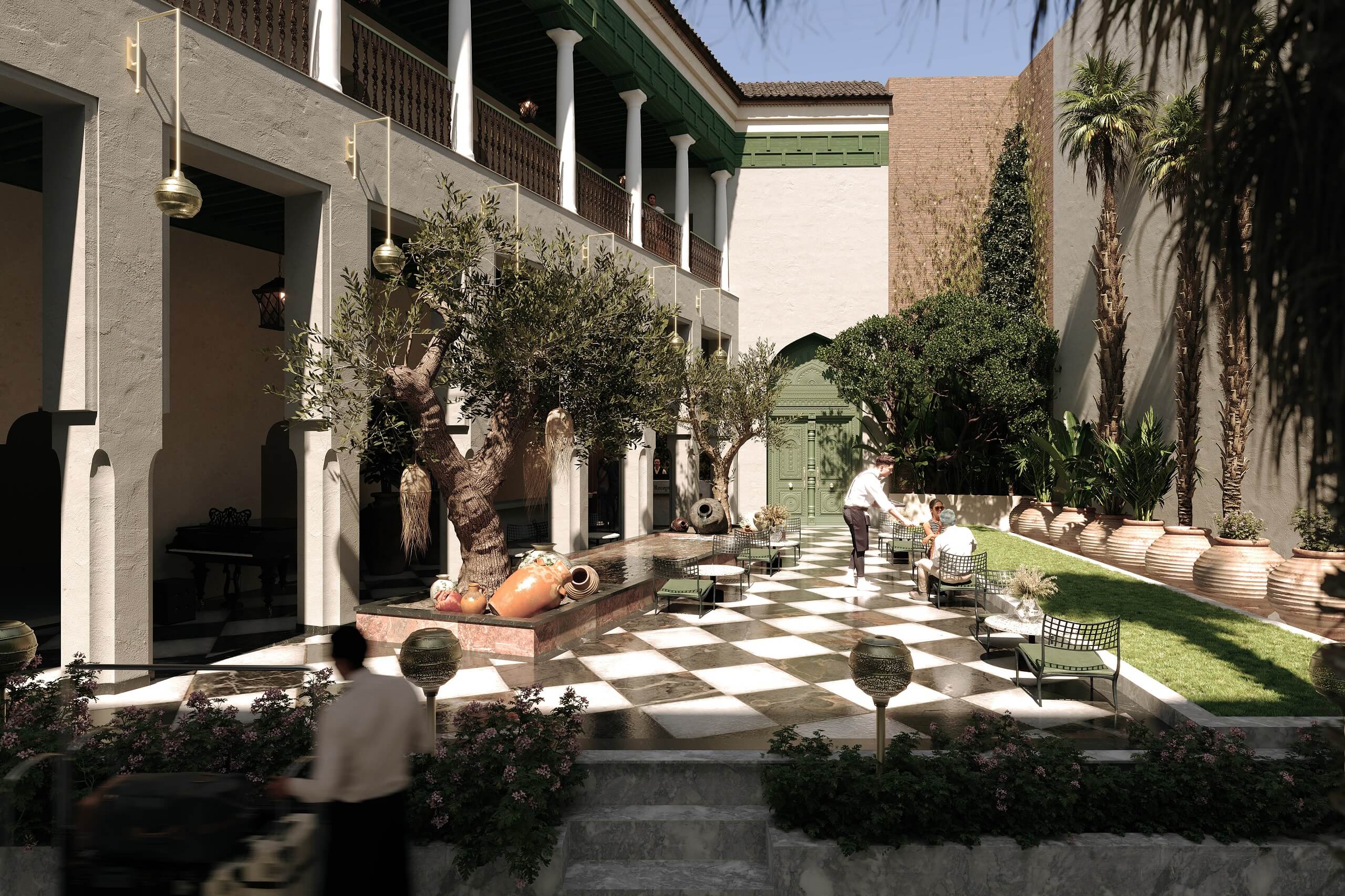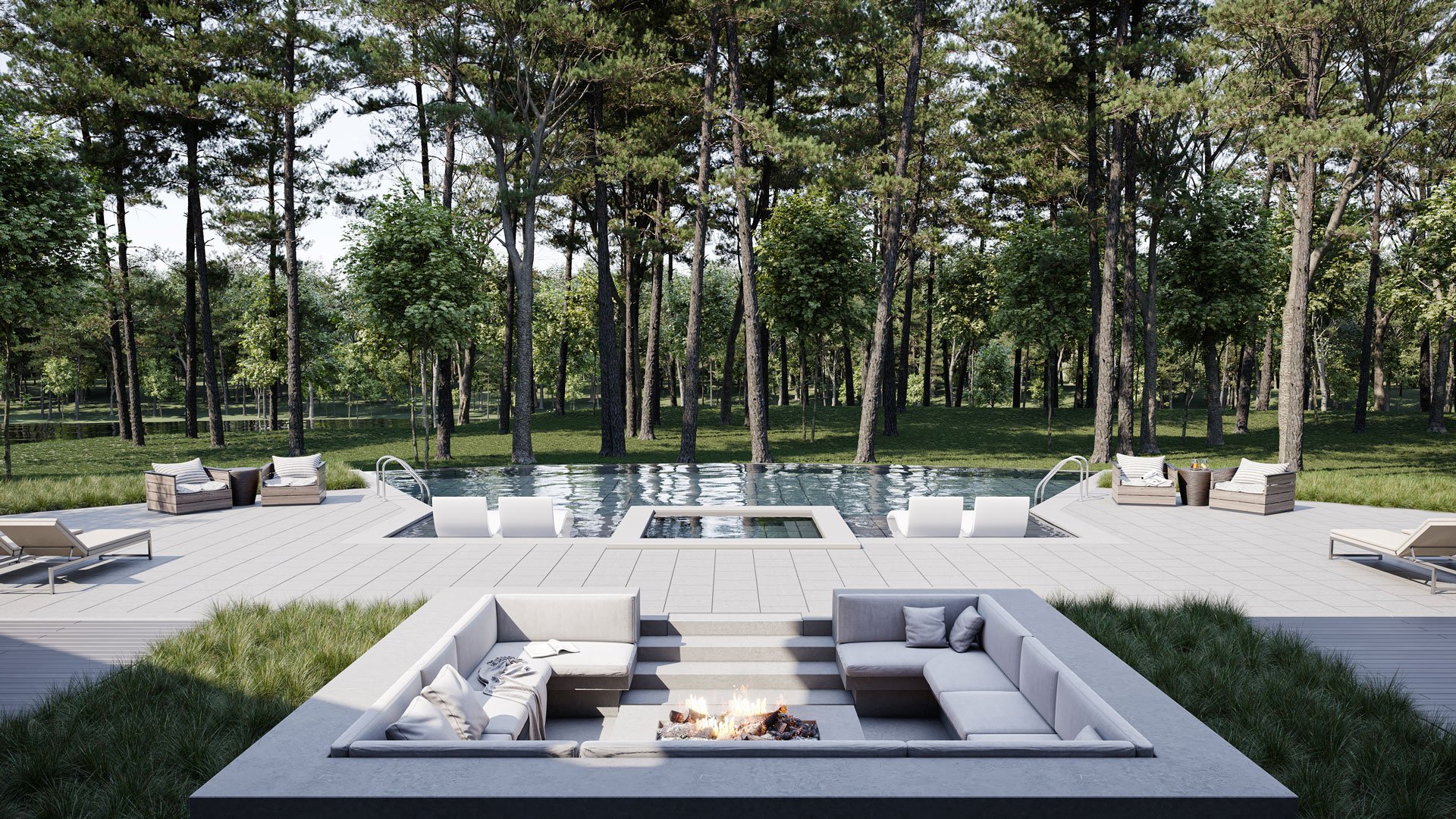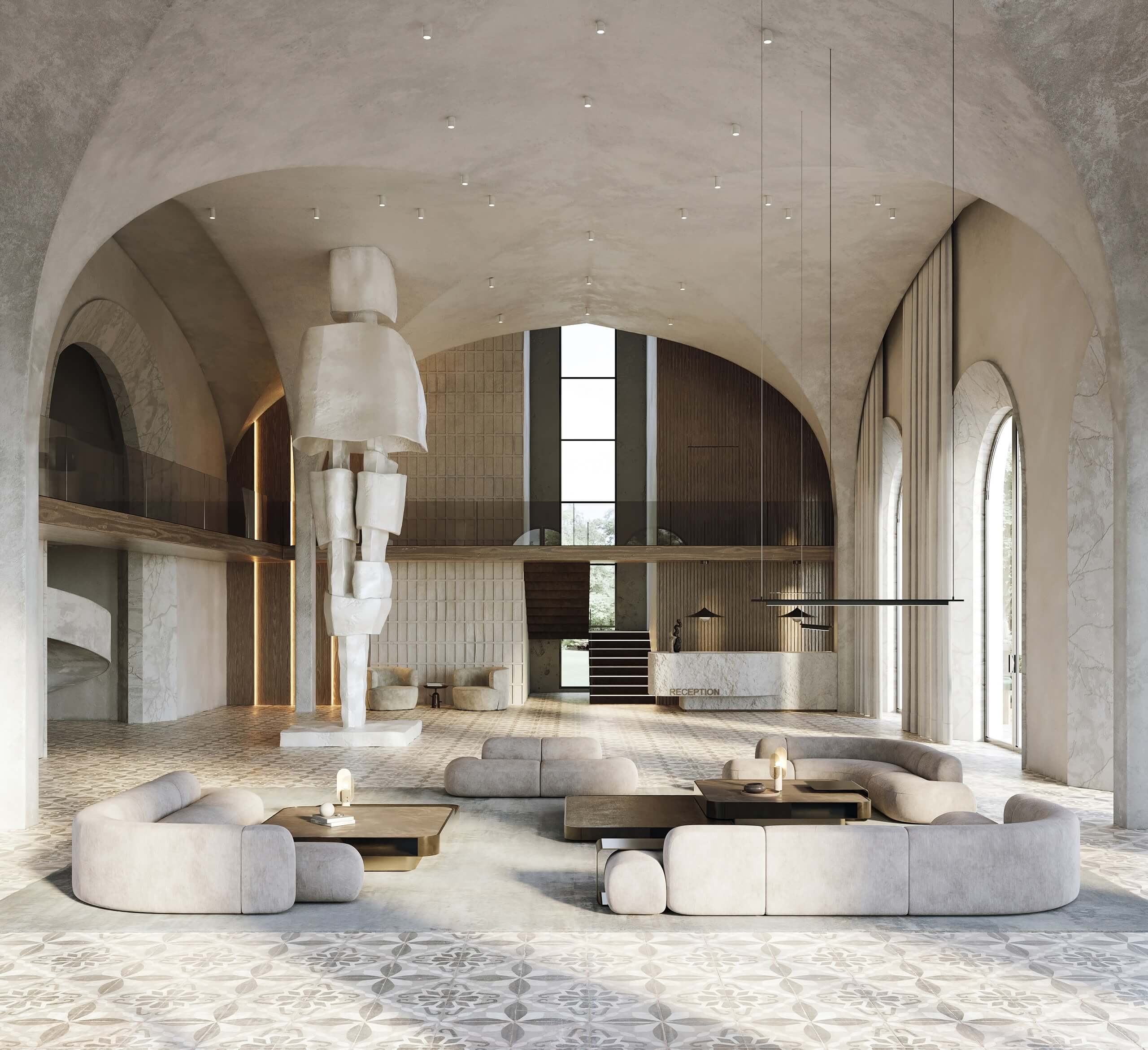Realistic rendering is universally acclaimed to be a very powerful problem solver in many industries, and we’re not talking about movies, videogames or art. Photorealistic CGI has almost supplanted 2D visuals in marketing, medicine, manufacturing, as well as interior and exterior design. Today any successful architect is outsourcing visualization of their work to a 3D rendering company, and you’ll see exactly why.
Realistic Rendering: 5 Benefits For Architects
#1. 3D Rendering Gives A Better Idea Of How Projects Will Look And Feel

One of the harder tasks for architects is showing what exactly their designs will look like when they’re brought to reality. Different light temperatures or colors, materials and clever visual tricks can be made irrelevant when they are conveyed by words. High-quality realistic 3D rendering gets rid of that problem entirely by perfectly representing things that don’t exist yet. This is especially true for 3d interior rendering services, which allow architects to show layouts, materials, and lighting exactly as planned.
However, it’s not that easy. If architects want to visualize their concepts perfectly, they either hire in-house 3D artists or outsource to 3D rendering studios. Outsourcing is more preferable. Hired specialists are on their paycheck and have to work at several projects at once, lowering quality and increasing production time. 3D studios are just contractors that need to be paid once, and they also have higher standards and strict quality control.
#2. CGI Elicits Better Emotional Response From Viewers

Artists always design drawings or paintings to make the viewer feel something: joy, sadness, fear, anger, or excitement. Architects are artists as well, so naturally they tend to elicit an emotional response from viewers of their creations. A high-rise building has to be sleek and stylish, taking breath away with how monumental it looks, while a suburban house should give a feeling of warmth and comfort, etc. Interiors can also serve different purposes, depending on the type of venue and the idea in mind. A bar or restaurant can be made inviting or exotic, a museum can capitalise on the progress or antiquity – the list goes on.
But how to capture a feeling in a drawing? The task seems almost impossible – words can’t describe feelings! With realistic rendering it’s a whole different story. Remember – interior rendering and exterior 3D renderings visualizes designs that are yet to be built, and do it exactly the way the architect wants them to look like. As such, architects can now convey feelings more easily through promotional images, since what viewers see looks real, even if it isn’t yet.
#3. 3D Renders Are Perfect Portfolio Fillers

Not too long ago architects had to wait until the buildings were complete before they could photograph them for portfolios, and that cost time and money. Now, the situation is different. Architects can order CGI visuals from 3D rendering studios during the early project stages to boost their chances in the market and fill portfolios faster.
Even if clients don’t approve a project, designers still keep the images — nothing goes to waste. A productive architect can collect a large portfolio of designs and ideas within a few years and steadily increase profit. Besides, when comparing the most realistic 3D render and a photograph. Only an expert can tell a difference – and that is likely to be the person who created said 3D render.
#4. Realistic Rendering Is The Best Visual Storytelling Medium
Visual storytelling is a vital component of project marketing. In a nutshell, it involves adding context to an image, making a viewer feel like it’s a real thing. It applies to architecture as well, allowing potential customers to imagine how great it would be to visit a venue or live in a house at the picture. Realistic lighting and mood work just fine, but a great addition is showing people in the depicted locations. This is a very effective trick, only achievable with realistic rendering. For example, take a look at this realistic vray render. It accomplishes two goals: it shows the gorgeous project and subtly hints that it would be a great idea to settle in there. Visual storytelling at its finest.
#5. CGI Presentations Are Investor Magnets
It’s one thing to sell a project to the people, but selling it to investors is a different story. A reputation is definitely helpful, but in most cases the presentation is the key to convincing businesses to work with an architect. No amount of words or hand-drawn sketches can get the job done. And here realistic rendering is a game changer. A photoreal depiction of a location or a scene, featuring every nook and cranny. The accuracy, level of detail and dedication will give you a huge advantage at a presentation.
It is possible to step it up and add realistic 3D tour or 3D animation architecture – a walkthrough or a fly-through is the way to go. This kind of presentation is guaranteed to attract contractors. Don’t forget about portfolio too – after a successful marketing campaign it alone will be an investor magnet for sure! Ultimately, 3D rendering for architects has become an indispensable tool for winning clients, impressing investors, and delivering designs with confidence.
Showcase your architectural project like a true work of art, brought to life with cutting-edge AI-powered CGI technology.
Realistic rendering is a huge enhancer of any architectural project’s potential. It helps attract investors, fill up portfolios and perfectly depict even your most complex designs. Now that you know how it can benefit you, it’s time to get to action. Sell your projects successfully with our professional services!

Irma Prus
Content Writer, Copywriter
Irma writes articles and marketing copy for ArchiCGI. Her dream is that more people discover the power of CGI for architecture. Irma is into neuromarketing, ruby chocolate and Doctor Who series.




Comments
Olivia Smart
Shammy Peterson
Kendrick
Carson
Anna Davis
Alex
Ivy
Taylor Hansen